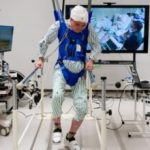On June 1, 2025, at 9:46 AM Eastern Daylight Time, instruments recorded a geomagnetic K-index of 8, nearing the rare level of 9—typically only observed during extreme solar events. Such high readings indicate powerful electric currents racing through Earth’s magnetic shield, signaling the onset of a severe solar storm.
This solar disturbance, expected to persist through at least June 3, poses significant risks for power grid operators, satellite managers, and frequent flyers. Anticipated impacts include increased radiation, intermittent radio outages, and potentially spectacular auroras similar to those observed earlier this spring.
Solar Storm Forecast The National Oceanic and Atmospheric Administration’s Space Weather Prediction Center has classified this event as G4 on its five-level geomagnetic scale, indicating severe storm conditions.
Over the next 48 hours, forecasts predict an average Kp index of around 7.67, with specific periods potentially rising solidly into G4 territory. While the probability remains small, there is even a slight chance conditions could briefly escalate to G5, a category reserved for storms occurring roughly once per decade.
Potential disruptions may affect numerous essential systems. Power grids situated northward of approximately 45° geomagnetic latitude face the threat of induced currents causing equipment malfunctions. Pipelines may experience accelerated corrosion from additional voltages, and high-frequency radio communications—critical for emergency services and aviation—may become unreliable.
Even everyday navigation applications reliant on satellite signals could temporarily malfunction or lose accuracy during peak storm conditions.
The Active Sun This storm originates from an active solar region labeled 4100. On May 30, at 8:05 PM EDT, this region produced an M8.1-class solar flare, accompanied by a powerful coronal mass ejection (CME) traveling towards Earth at approximately 1,938 kilometers per second (1,204 miles per second). The CME arrived at Earth’s magnetosphere around midday June 1, aligning with observed geomagnetic disturbances.
Prior to this CME impact, solar-wind speeds were already elevated due to a coronal-hole stream, dropping slightly from 800 km/s on May 31 to around 650 km/s just before the CME arrived.
NOAA forecasts additional solar activity, estimating a 75% chance of minor solar-radiation storms daily through June 3, alongside a 65% chance of moderate radio blackouts (R1-R2), and a 25% chance for stronger R3 events.
Ground-Level Impacts During severe geomagnetic events, long power transmission lines act as enormous antennas, carrying unwanted currents into transformers. These currents can overheat equipment, forcing operators to reduce electrical loads or shut down parts of the power grid entirely.
Satellite systems may experience surface charging, increased orbital drag, and orientation challenges that disrupt signal communication with ground stations.
Spectacular Auroras A significant benefit of severe solar storms is the expansion of the auroral oval, enabling colorful displays of auroras much farther south than usual—potentially visible as far south as Alabama and northern California over the coming nights. For best views, observers should look skyward after local midnight, weather permitting.
Looking Ahead NOAA’s predictions indicate that Kp values will remain high (around 8 or above) through late afternoon June 1 before gradually declining toward G2 levels by midday June 3. Residual turbulence is expected even after the storm’s peak.
Due to the complexity of CME interactions with Earth’s magnetic field, exact forecasting remains challenging. The current solar cycle is progressing toward its maximum intensity, meaning similar solar storm events will become increasingly common.
Infrastructure resilience has improved since notable past events, such as the 1989 Québec blackout. Nonetheless, the proliferation of satellites and technological infrastructure highlights the importance of ongoing preparedness and contingency planning.
Protection Measures During peak storm intervals, individuals can safeguard sensitive electronics by unplugging non-essential devices to avoid damage from voltage spikes. Amateur radio operators may need to shift frequencies or communication modes to maintain operations.
Professionals dependent on precise GPS for agriculture or surveying may consider delaying critical tasks until conditions stabilize. Networks managing critical infrastructure typically rely on backup systems like atomic clocks and fiber optics when satellite navigation falters.
While systems are tested regularly, real-world scenarios like the current G4 storm offer valuable insights into their operational robustness.
Stay Vigilant and Enjoy the Display This solar storm presents an extraordinary opportunity for scientific research and practical resilience testing. With K-index readings approaching extreme levels, significant radiation storm probabilities, and high chances of radio disruptions, staying informed and prepared is crucial.
After the storm passes, researchers will analyze the collected data to enhance forecasting models. For now, stay aware, remain prepared, and if weather conditions allow, enjoy the spectacular natural light show unfolding in the skies.
For ongoing updates and additional information, please visit the Space Weather Prediction Center website.











